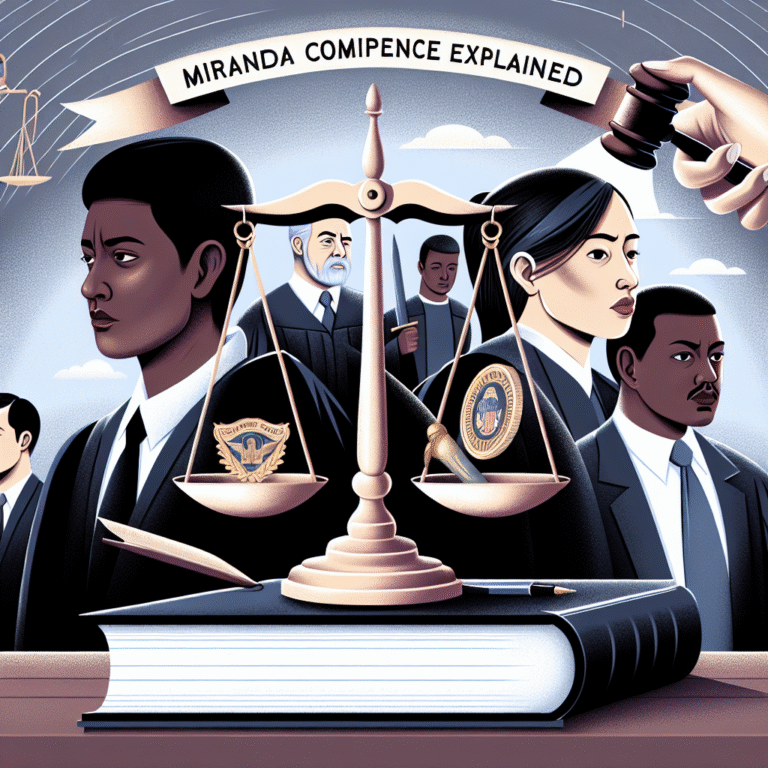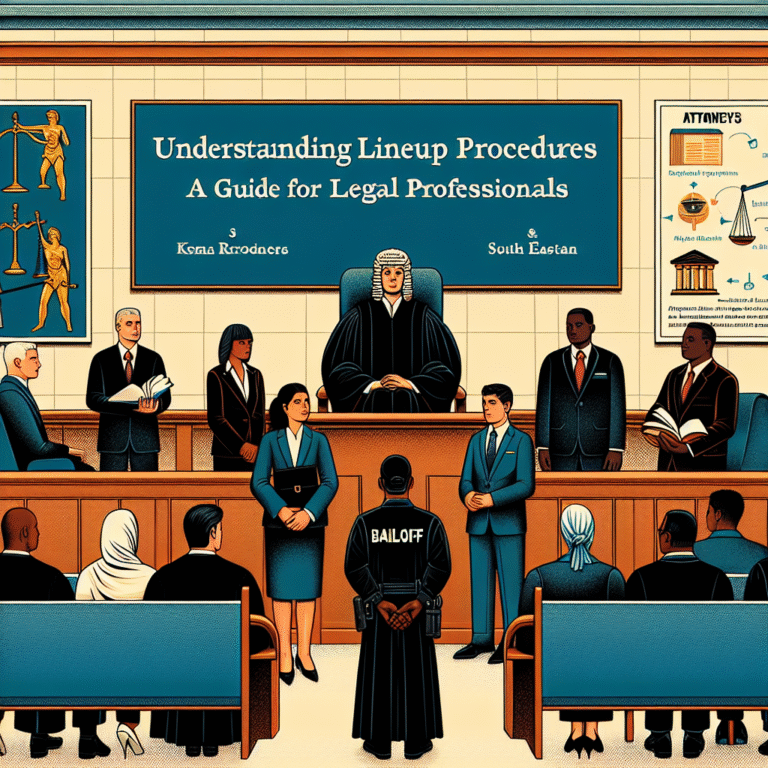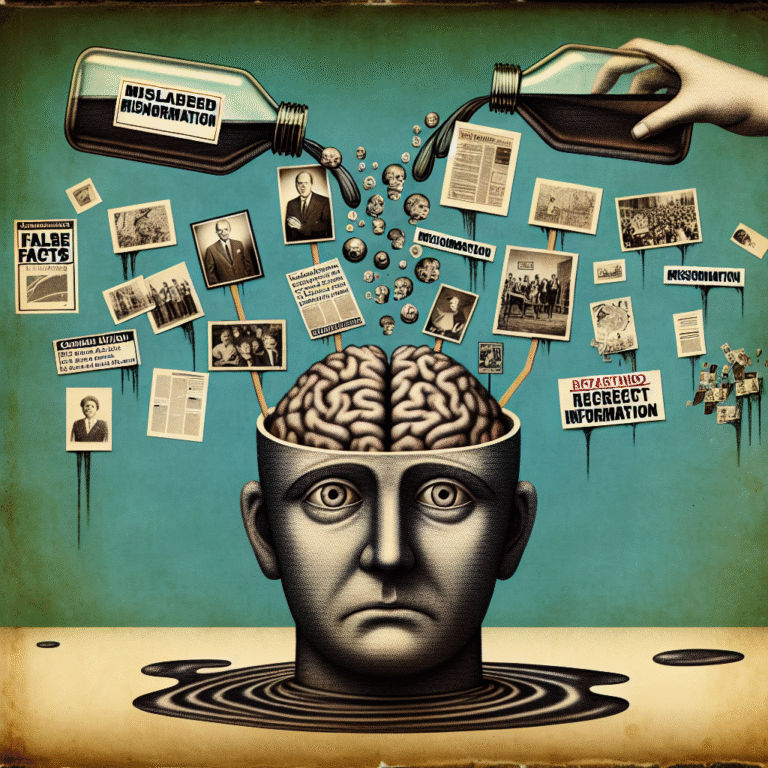
Introduction
In today’s complex world, understanding criminal behavior is increasingly essential, not just for forensic psychologists and law enforcement but for society as a whole. The phrase "Behind the Crime: What Mental States Reveal About Offenders" encapsulates an intricate web of psychological conditions that drive individuals to commit crimes. With crime statistics relentlessly climbing and public safety at stake, unraveling the mental states behind these actions becomes imperative.
By delving into the psychological underpinnings of offenders, we can glean insights that may not only help prevent future crimes but also equip us with the knowledge to rehabilitate those who have strayed. In this article, we explore the various mental states of offenders and what they reveal about the criminal mind, supported by case studies and research data that underscore the urgency and importance of this discussion.
The Psychological Framework
Understanding Mental States
Mental states encompass a range of emotions, thoughts, and cognitive processes that shape human behavior. According to the American Psychological Association, mental states can vary dramatically among individuals, affecting how they perceive the world and interact with it. By studying these states, we can better understand what drives criminal behavior.
Not every individual with a mental disorder turns to crime; however, certain conditions can heighten the risk of engaging in criminal activities. Conditions such as schizophrenia, bipolar disorder, and borderline personality disorder can significantly influence decision-making processes, thereby illuminating the “why” behind crimes.
The Spectrum of Criminal Minds
Not all offenders are created equal. The spectrum of criminal minds ranges from organized criminals, who plan meticulously, to disorganized offenders, whose actions may stem from impulsivity and emotional distress.
| Type of Offender | Description | Mental State Influence |
|---|---|---|
| Organized | Plans meticulously | High cognitive function; may use mental states to rationalize actions |
| Disorganized | Acts impulsively | Emotional distress; lack of foresight |
| White-Collar | Uses deceit for financial gain | Cognitive distortion; often rationalizes unethical actions |
| Violent | Commits acts of aggression | Emotional triggers; can be influenced by past trauma |
The Case Studies
Case Study 1: Mark David Chapman
One of the most infamous crimes in modern history is the assassination of John Lennon by Mark David Chapman. Chapman’s mental state at the time was complex, featuring elements of paranoia and delusions. Diagnosed with a form of schizophrenia, he believed he was compelled to kill Lennon due to hallucinations that perceived the musician as a “phony.”
Analysis: Chapman’s case starkly illustrates how severe mental disorders can lead individuals to commit tragic acts. His delusions distorted his reality, paving the way for a crime that shocked the world.
Case Study 2: Anders Breivik
Norwegian mass murderer Anders Breivik killed 77 people in 2011, justifying his actions through extreme ideological beliefs. Initially deemed unfit to stand trial, Breivik was eventually diagnosed with paranoid personality disorder.
Analysis: Breivik’s case raises questions about how deeply entrenched beliefs can warp mental states, leading to devastating consequences. His unyielding conviction represents another facet of the spectrum of criminal minds.
Case Study 3: Ted Bundy
Ted Bundy’s heinous acts showcase a different psychological landscape. Bundy had a charm that manipulated others, masquerading as a “normal” individual despite having antisocial personality disorder (ASPD).
Analysis: Bundy’s case exemplifies how an articulate and charismatic persona can conceal extreme dysfunction. ASPD affects empathy and morality, enabling individuals like Bundy to engage in extreme violence without remorse.
Case Study 4: Aileen Wuornos
Aileen Wuornos, a notorious female serial killer, was driven by a series of traumatic experiences, from sexual abuse to homelessness. Diagnosed with borderline personality disorder, her actions were triggered by life events that exacerbated her mental health issues.
Analysis: Wuornos’ history underscores the powerful influence of trauma on mental states. Her situation illustrates how environmental factors, paired with psychological conditions, set the stage for criminal behavior.
Mental States and Crime Prevention
Understanding mental states can significantly contribute to crime prevention strategies. When mental health services are prioritized, society can intervene earlier, potentially reducing the incidence of crime.
Proactive Mental Health Services
Investing in mental health care is crucial. Access to therapy and counseling for those at risk can provide timely intervention. Programs that target at-risk youth can not only help mitigate the potential for future criminal behavior but also foster resilience.
Community Engagement
Community programs that engage individuals with mental health issues can offer support systems that encourage positive behavior. This not only alleviates potential criminal behaviors but creates an environment conducive to healing and rehabilitation.
| Strategy | Benefits |
|---|---|
| Mental Health Access | Reduces stigma, provides early interventions |
| Community Programs | Fosters a sense of belonging; reduces isolation |
| Education and Awareness | Informs the public about mental health; builds empathy |
The Role of Rehabilitation
Rethinking Punishment
The traditional penal system often emphasizes punishment over rehabilitation, which can perpetuate cycles of crime. By focusing on the underlying mental health issues, rehabilitation programs can provide offenders with tools for growth.
Case Study of Rehabilitation: The Netherlands
In the Netherlands, the penal system advocates for mental health treatment within prisons. This approach has successfully reduced recidivism rates among offenders with mental health issues.
Analysis: The Dutch system demonstrates that addressing mental states through rehabilitative strategies can lead to less crime and a smoother reintegration into society.
The Impact of Media and Public Perception
Media Representation of Offenders
The portrayal of criminals in media often sensationalizes their actions, creating stereotypes that can cloud societal perceptions of mental health. Distorted images can lead to fear and misunderstanding, making it challenging to differentiate between violent offenders and those struggling with mental illness.
Educational Initiatives
Education plays a vital role in reshaping narratives around crime and mental health. By providing balanced information about how mental states influence criminal behavior, societies can foster a more compassionate environment.
Conclusion
Understanding "Behind the Crime: What Mental States Reveal About Offenders" is not just a theoretical exercise; it holds real-world implications for justice, prevention, and societal well-being. The cases studied illustrate the diverse psychological backgrounds of offenders while emphasizing the crucial relationship between mental health and criminal behavior.
By prioritizing mental health and reframing rehabilitation, societies stand to benefit from a comprehensive crime prevention strategy that addresses the root causes of offending behavior.
The insights gathered through this exploration provoke critical thought on how we can embrace knowledge to foster empathy, reduce stigma, and ensure that understanding and support for mental health are at the forefront of our approach to crime and justice.
FAQs
1. What are the most common mental disorders associated with criminal behavior?
The most common include schizophrenia, bipolar disorder, antisocial personality disorder (ASPD), and borderline personality disorder.
2. Can mental illness be a defense in criminal cases?
In some cases, it can be used as a defense, but this typically requires a robust psychological evaluation showing that the offender was unable to understand the nature of their actions at the time.
3. How can society help individuals with mental health issues to prevent criminal behavior?
Societal help can come through enhanced access to mental health services, community engagement programs, and educational initiatives aimed at reducing stigma.
4. What role does childhood trauma play in shaping criminal behavior?
Childhood trauma can lead to various psychological issues that increase the likelihood of engaging in criminal acts, as seen in cases like Aileen Wuornos.
5. Are all offenders mentally ill?
No, not all offenders have mental illnesses. However, understanding the mental states of some offenders can illuminate important aspects of their behaviors and motivations.
By incorporating a compassionate approach to understanding crime and mental health, we can work toward a society that focuses on prevention and rehabilitation rather than mere punishment.

















